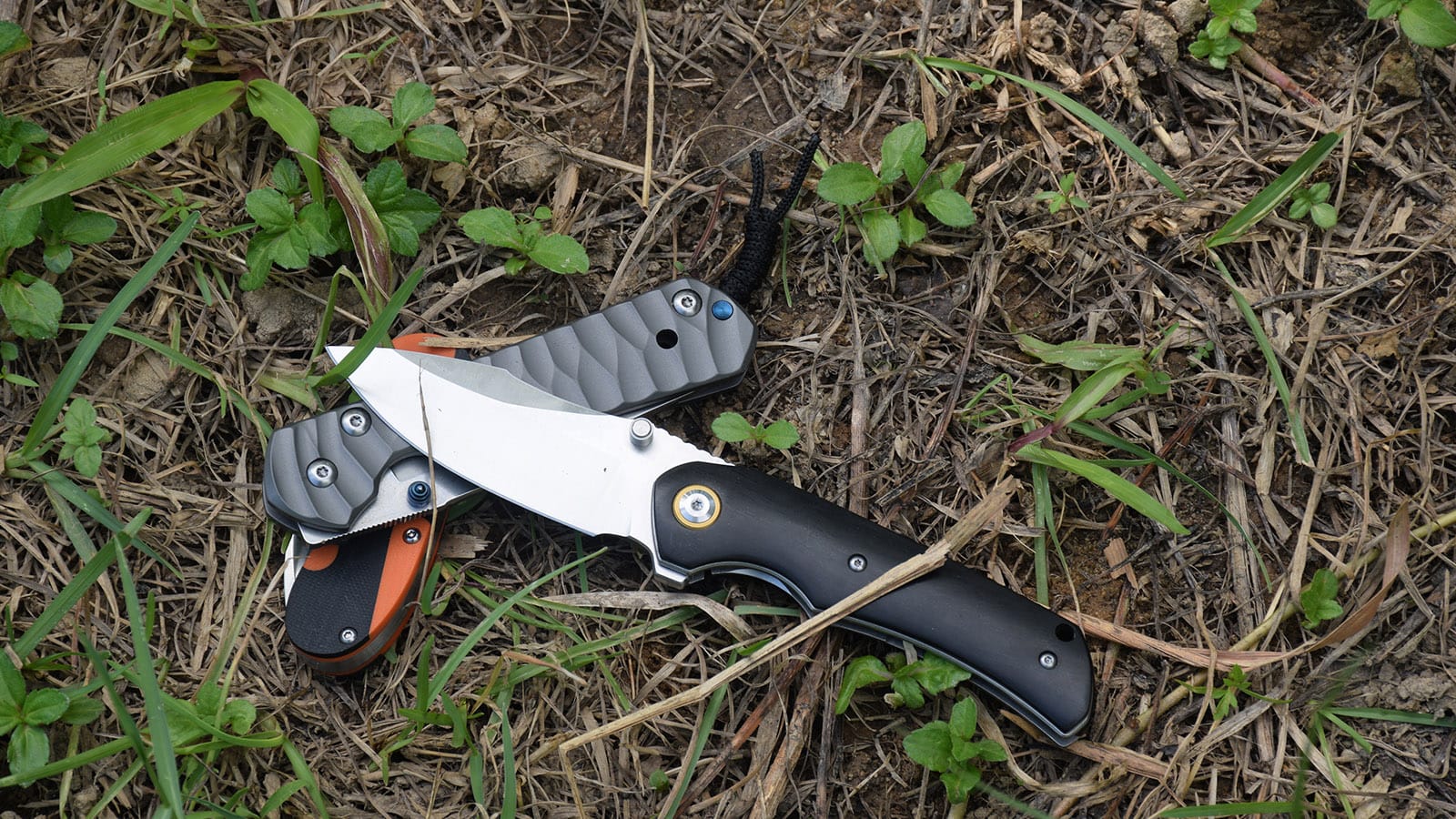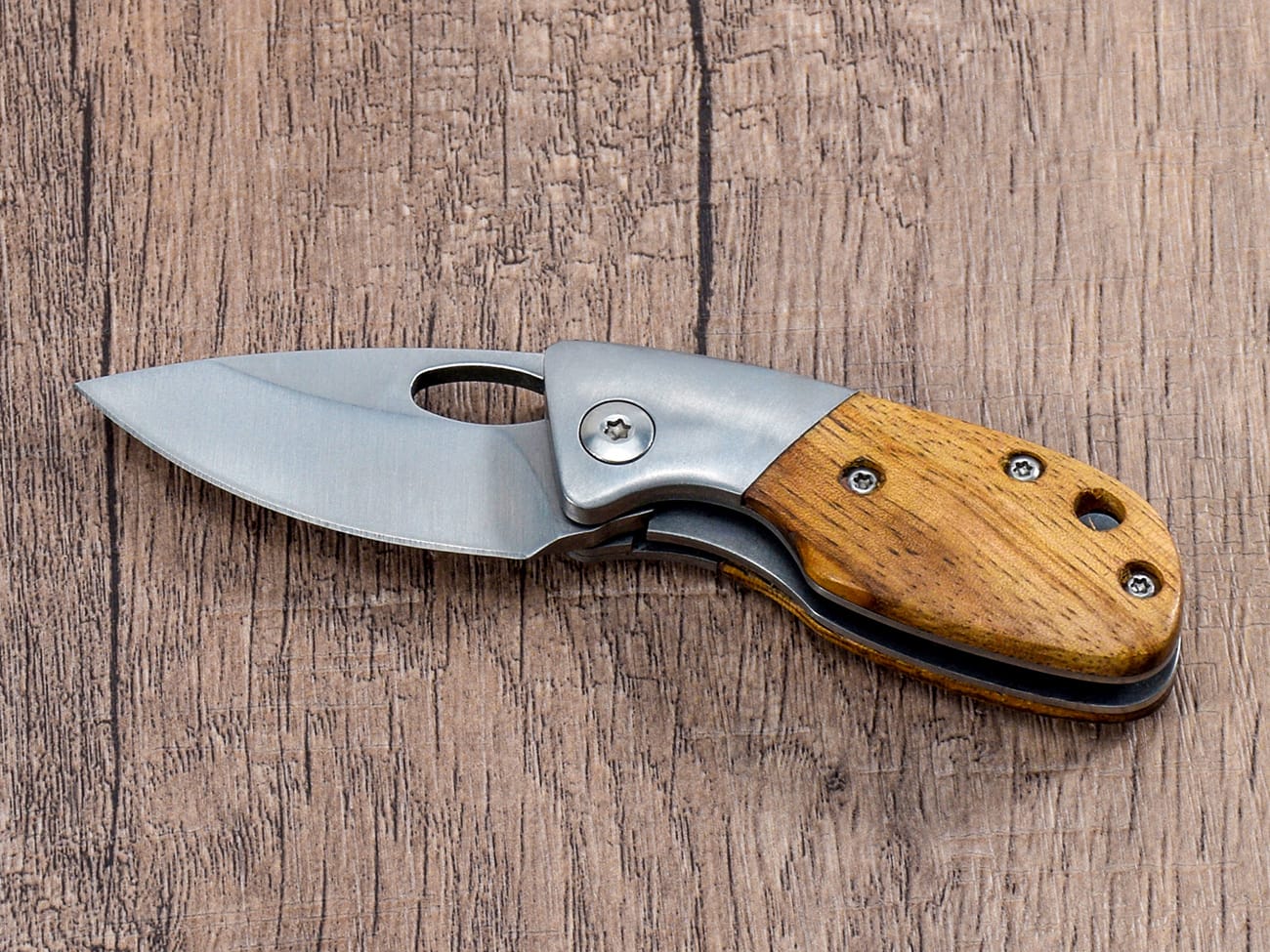Zajímá vás svět kapesních nožů? Ať už jste ostřílení nadšenci nebo teprve začínáte zkoumat možnosti každodenního nošení, tento komplexní průvodce vás provede vším, co potřebujete vědět o kapesních nožích. Od jejich bohaté historie až po praktické využití a výběr toho nejlepšího kapesního nože pro vaše potřeby, máme pro vás vše. Čtěte dále a zjistěte, proč jsou kapesní nože nezbytným nástrojem pro moderní život a jak mohou zlepšit vaše každodenní zážitky.
Co je to kapesní nůž a proč by vás to mělo zajímat?
Kapesní nůž je kompaktní zavírací nůž navržený pro snadné přenášení v kapse nebo malé tašce. Tyto všestranné nástroje jsou po staletí základem každodenního nošení (EDC) a nabízejí pohodlí a funkčnost v přenosném balení. Čím jsou ale kapesní nože tak výjimečné?
Evoluce kapesního nože: Stručná historie
Historie kapesního nože je stejně fascinující jako samotný nástroj. Vydejme se na cestu časem, abychom pochopili, jak tato nepostradatelná věc vznikla.
- Starověký původ: Koncepce zavíracích nožů sahá až do starověkých civilizací, s ranými příklady nalezenými v archeologických nalezištích.
- Středověk: Skládací nože se staly běžnějšími, často je používali jako jídelní náčiní cestovatelé.
- Průmyslová revoluce: Techniky hromadné výroby vedly k dostupnějším a široce dostupným kapesním nožům.
- 19. století: The Švýcarský armádní nůž byl vynalezen a způsobil revoluci v designu více nástrojů.
- 20. století: Inovace materiálů a zamykacích mechanismů zlepšily funkčnost a bezpečnost kapesního nože.
- Moderní éra: Dnešní kapesní nože kombinují špičkové materiály s časem prověřeným designem a uspokojují širokou škálu použití a preferencí.
Proč by měl každý zvážit nošení kapesního nože
V našem moderním světě by vás mohlo zajímat, zda je nošení kapesního nože stále aktuální. Zde je několik přesvědčivých důvodů, proč by měl být kapesní nůž součástí vašeho každodenního nošení:
- Všestrannost: Od otevírání balíčků po přípravu jídla je kapesní nůž víceúčelovým nástrojem.
- Nouzová připravenost: Může být záchranou v neočekávaných situacích.
- Pohodlí: Mít řezný nástroj po ruce šetří čas a frustraci.
- Sebevědomí: Kapesní nůž vám umožňuje samostatně zvládnout malé úkoly.
- Spojení s tradicí: Nošení kapesního nože vás spojuje s dlouhou historií používání lidských nástrojů.
Jak si vybrat nejlepší kapesní nůž pro vaše potřeby
S nesčetnými dostupnými možnostmi může být výběr správného kapesního nože ohromující. Zde je průvodce, který vám pomůže učinit informované rozhodnutí:
Jaké faktory byste měli zvážit při nákupu kapesního nože?
- Zamýšlené použití: Používáte jej pro každodenní úkoly, outdoorové aktivity nebo specializované práce?
- Materiál čepele: Možnosti zahrnují nerezovou ocel, uhlíkovou ocel a prémiové slitiny jako D2.
- Materiál rukojeti: Běžné možnosti jsou G10, dřevo, titan a micarta.
- Uzamykací mechanismus: Pro bezpečnost zvažte možnosti, jako je zámek vložky, zámek rámu a zámek osy.
- Velikost a hmotnost: Vyvažte přenosnost s funkčností podle vašich potřeb.
- Právní aspekty: Mějte na paměti místní zákony týkající se délky a typu čepele.
Jaké jsou různé typy kapesních nožů?
Kapesní nože se dodávají v různých stylech, z nichž každý je vhodný pro různé účely:
- Skládací nože: Nejběžnější typ, s čepelí, která se dá složit do rukojeti.
- Multi-Tools: Kombinujte čepel nože s dalšími nástroji, jako jsou šroubováky a kleště.
- Švýcarské armádní nože: Kultovní multifunkční nářadí známé pro svou všestrannost.
- Taktické zavírací nože: Navrženy pro odolnost a rychlé nasazení.
- Gentleman's Folders: Elegantní, kompaktní nože vhodné pro formální prostředí.
Kolik byste měli očekávat, že zaplatíte za kvalitní kapesní nůž?
Ceny kapesních nožů se značně liší v závislosti na materiálech, řemeslném zpracování a značce. Zde je obecný průvodce cenou:
- Cenově výhodné: $20-$50
- Střední řada: $50-$150
- High-End: $150-$500+
- Vlastní nebo sběratelské kousky: $500+
Pamatujte, že vyšší cena nemusí vždy zaručit lepší kvalitu. Mnoho vynikajících kapesních nožů je dostupných za rozumné ceny.
Pochopení anatomie a terminologie kapesního nože
Chcete-li plně docenit kapesní nože, je nezbytné porozumět jejich součástem a terminologii používané nadšenci.
Jaké jsou hlavní části kapesního nože?
- Čepel: Řezná hrana nože.
- Rukojeť: Poskytuje úchop a ve složeném stavu ukrývá čepel.
- Pivot: Bod, kolem kterého se čepel otáčí.
- Zámek: Mechanismus, který udržuje čepel otevřenou během používání.
- Kapesní klip: Umožňuje bezpečné připevnění ke kapse nebo tašce.
Jaké jsou běžné tvary čepelí a jejich použití?
Různé tvary čepelí slouží k různým účelům:
- Drop Point: Všestranný tvar vhodný pro většinu úkolů.
- Clip Point: Dobré pro přesnou práci a piercing.
- Tanto: Navrženo pro sílu a průbojnost.
- Sheepfoot: Ideální pro kontrolované řezy a bezpečnost.
- Wharncliffe: Vynikající pro detailní řezání.
Jaké typy uzamykacích mechanismů se používají u kapesních nožů?
Uzamykací mechanismy zajišťují bezpečnost při používání. Mezi běžné typy patří:
- Liner Lock: Pružinová vložka, která se přesune na místo za čepelí.
- Zámek rámu: Podobný zámku vložky, ale používá rám rukojeti.
- Axis Lock: Patentovaná konstrukce využívající odpruženou tyč.
- Lockback: Kolébka namontovaná na hřbetu, která zajišťuje čepel.
- Zámek tlačítka: K zajištění čepele se používá pružinové tlačítko.
Jak správně používat a udržovat kapesní nůž
Vlastnit kapesní nůž s sebou nese zodpovědnost. Zde je návod, jak používat a pečovat o nůž:
Jaká jsou základní bezpečnostní pravidla pro používání kapesního nože?
- Vždy se odřízněte od sebe a ostatních.
- Udržujte svůj nůž ostrý – tupá čepel je nebezpečnější.
- Používejte pro danou práci správný nástroj – nepoužívejte nůž jako páčidlo nebo šroubovák.
- Při používání nože dávejte pozor na své okolí.
- Když nůž nepoužíváte, bezpečně jej uložte.
Jak brousíte a udržujete kapesní nůž?
Pravidelná údržba zajistí, že váš nůž bude fungovat co nejlépe:
- Čištění: Nůž pravidelně čistěte jemným mýdlem a vodou a důkladně osušte.
- Mazání: Na čep a další pohyblivé části naneste malé množství oleje na nože.
- Ostření: Použijte brusný kámen nebo systém vhodný pro vaši ocel čepele.
- Utahování: Pravidelně kontrolujte a utahujte všechny uvolněné šrouby.
Jakých běžných chyb se při používání kapesního nože vyvarovat?
- Použití nadměrné síly: Nechte čepel vykonávat práci.
- Zanedbávání údržby: Pravidelná péče prodlužuje životnost vašeho nože.
- Nesprávné skladování: Nůž skladujte na suchém místě, abyste zabránili korozi.
- Použití k nezamýšleným účelům: Kapesní nůž není šroubovák nebo páčidlo.
- Ignorování místních zákonů: Buďte si vědomi a dodržujte zákony týkající se nože ve vaší oblasti.
Právní aspekty a etické používání kapesních nožů
Odpovědné vlastnictví je u kapesních nožů zásadní. Zde je to, co potřebujete vědět:
Jaká jsou zákonná omezení pro nošení kapesních nožů?
Zákony se liší podle místa, ale mezi běžná omezení patří:
- Délka čepele: Mnoho oblastí omezuje délku čepele pro každodenní nošení.
- Automatické nože: Často omezené nebo zakázané.
- Skryté nošení: Některá místa vyžadují, aby byly nože při nošení viditelné.
- Konkrétní místa: Ve školách, vládních budovách a na letištích mohou platit omezení.
Vždy prozkoumejte a dodržujte místní zákony týkající se nošení a používání nože.
Jak můžete zodpovědně nosit a používat kapesní nůž?
- Poznejte zákony: Seznamte se s místními předpisy.
- Používejte diskrétnost: Při používání nože dávejte pozor na své okolí.
- Vzdělávejte ostatní: Sdílejte znalosti o bezpečnosti nožů s přáteli a rodinou.
- Dodržujte bezpečnou manipulaci: Vždy používejte svůj nůž zodpovědně a bezpečně.
- Respektujte ostatní: Buďte ohleduplní k těm, kteří mohou být v blízkosti nožů nepohodlní.
Budoucnost kapesních nožů: Trendy a inovace
Odvětví kapesních nožů se neustále vyvíjí. Zde je několik zajímavých událostí, které je třeba sledovat:
Jaké nové materiály se používají v moderních kapesních nožích?
- Super Steels: Pokročilé slitiny nabízející vylepšené zachování hran a odolnost proti korozi.
- Karbonové vlákno: Lehký a pevný materiál rukojeti.
- Keramické čepele: Nemagnetické a extrémně odolné proti opotřebení.
Jak technologie a design ovlivňují vývoj kapesního nože?
- 3D tisk: Umožňuje složité návrhy a zakázkové díly.
- Chytré funkce: Integrace elektronických součástek pro přidanou funkčnost.
- Ergonomické výhody: Vylepšený design rukojeti pro pohodlí a použitelnost.

Moderní kapesní nůž s rukojetí G10 a čepelí z nerezové oceli
Závěr: Proč je kapesní nůž základním nástrojem moderního života
V našem rychle se rozvíjejícím, technologiemi řízeném světě zůstává skromný kapesní nůž nepostradatelným nástrojem. Jeho všestrannost, praktičnost a spojení s lidskou vynalézavostí z něj dělají více než jen řezací nástroj – je to symbol sebedůvěry a připravenosti. Ať už jste outdoorový nadšenec, kutil nebo prostě někdo, kdo oceňuje mít ten správný nástroj po ruce je kapesní nůž investicí do pohodlí a schopností. Výběrem správného nože, jeho odpovědným používáním a správnou údržbou budete mít spolehlivého společníka po mnoho let. Pamatujte si tyto klíčové body o kapesních nožích:
- Nabízejí bezkonkurenční všestrannost pro každodenní úkoly
- Správný výběr závisí na vašich konkrétních potřebách a preferencích
- Pravidelná údržba zajišťuje dlouhou životnost a bezpečný provoz
- Odpovědné vlastnictví zahrnuje porozumění a dodržování místních zákonů
- Kapesní nůž se stále vyvíjí s novými materiály a technologiemi
Takže, ať už si chcete koupit svůj první kapesní nůž nebo přidat do své sbírky, přijměte tento nadčasový nástroj a objevte mnoho způsobů, jak může zlepšit váš každodenní život. Šťastné nošení!




